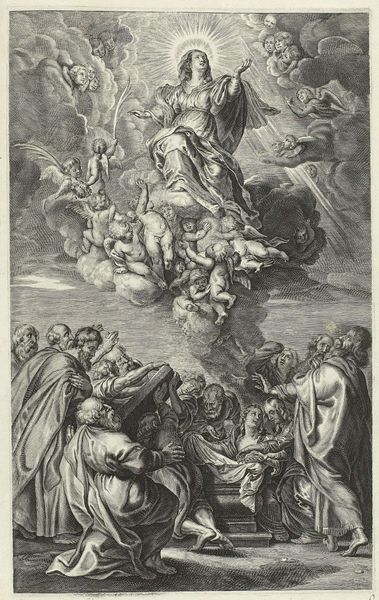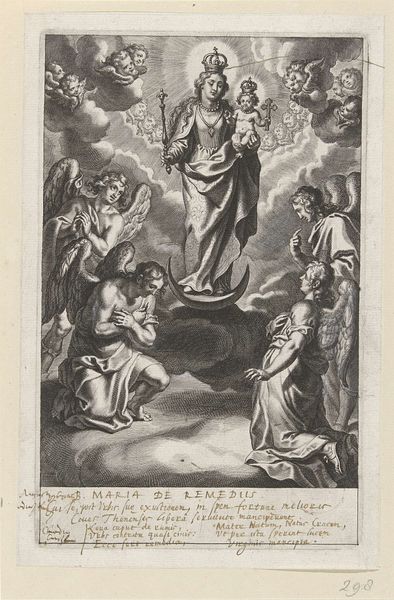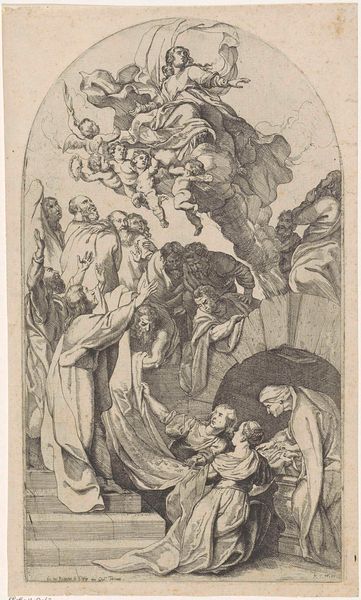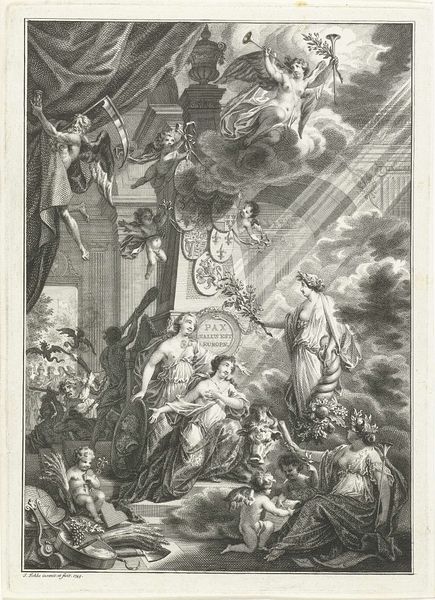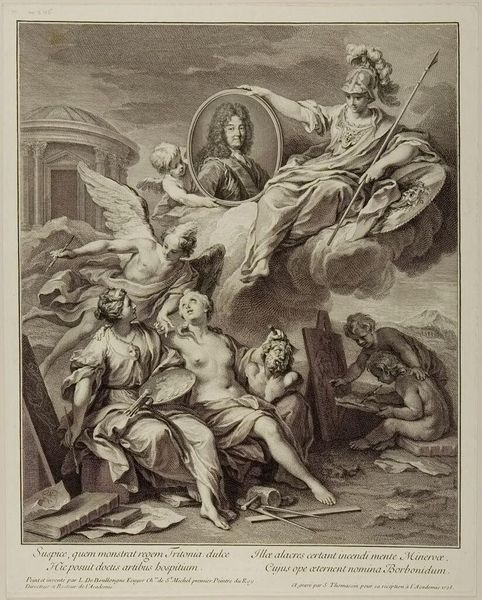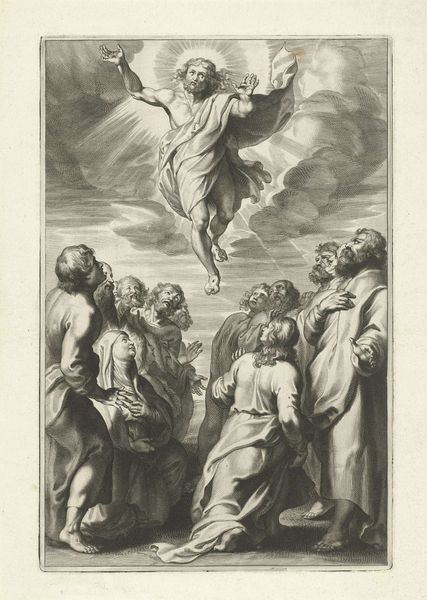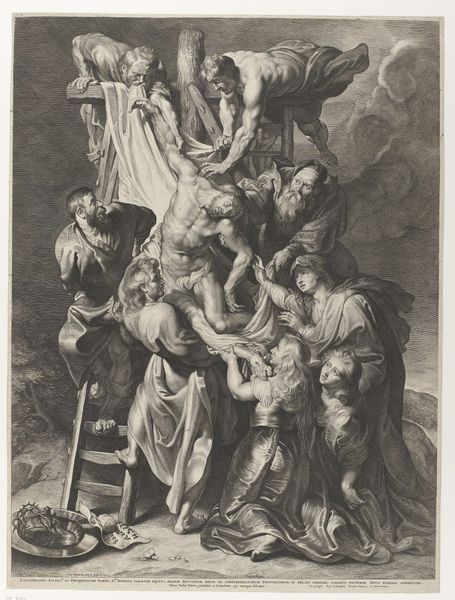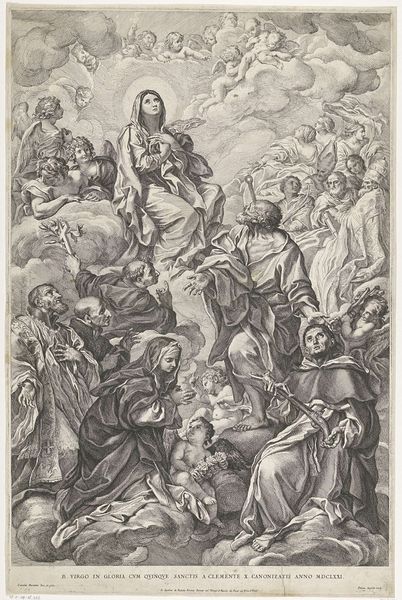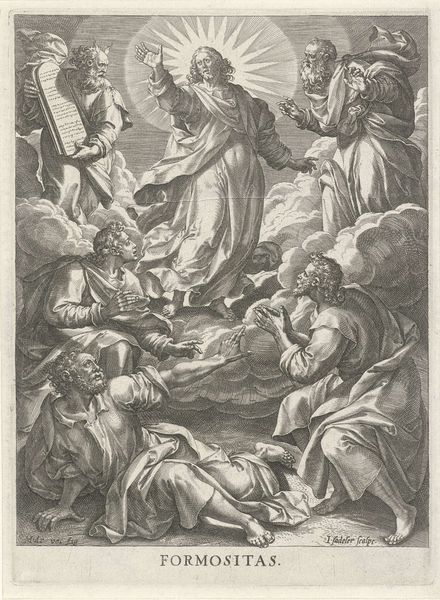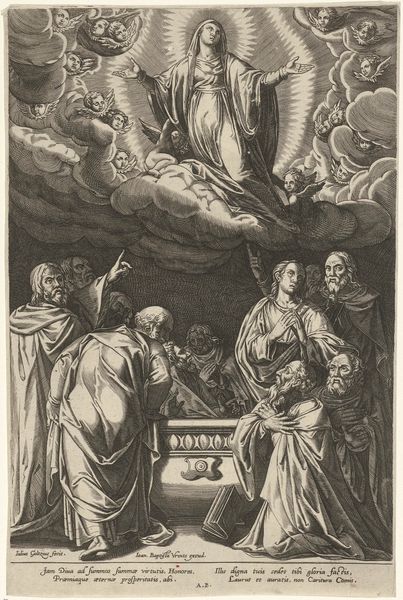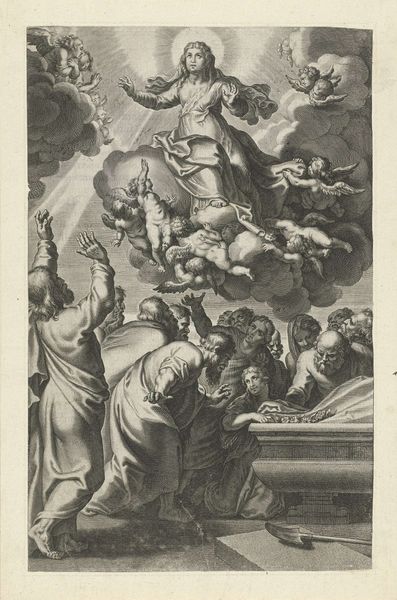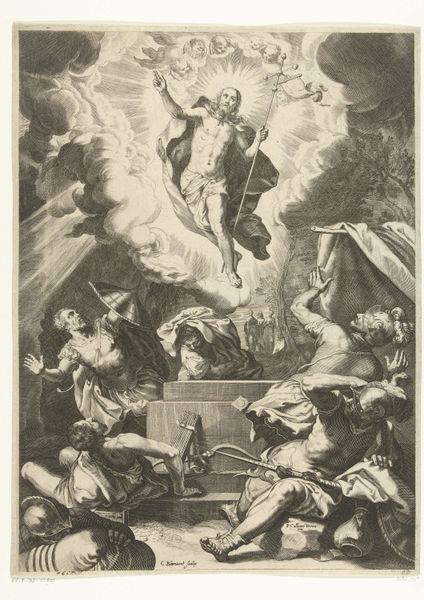
#
pencil drawn
#
toned paper
#
light pencil work
#
pencil sketch
#
personal sketchbook
#
ink drawing experimentation
#
pen-ink sketch
#
sketchbook drawing
#
pencil work
#
sketchbook art
Dimensions: height 313 mm, width 200 mm
Copyright: Rijks Museum: Open Domain
Bernard Picart created this print, The Ascension of Mary, using etching and engraving techniques. Look closely, and you can see how these linear methods define the image. Etching involves coating a metal plate with a waxy ground, then drawing through it with a needle to expose the metal. Acid is then applied, biting into the exposed lines, creating grooves that hold ink. Engraving, on the other hand, uses a tool called a burin to directly carve lines into the metal. Both require immense skill. The stark black and white contrast, the delicate rendering of light and shadow, and the incredible amount of labor that went into producing this print, all contribute to its aesthetic impact. Though seemingly distant from contemporary concerns, prints like these played a crucial role in disseminating images and ideas across Europe. They were a kind of proto-mass media, connecting the labor of the artist with the devotion of the audience. By focusing on these processes, we can begin to bridge the perceived gap between the fine arts and the more workaday world of production.
Comments
No comments
Be the first to comment and join the conversation on the ultimate creative platform.
